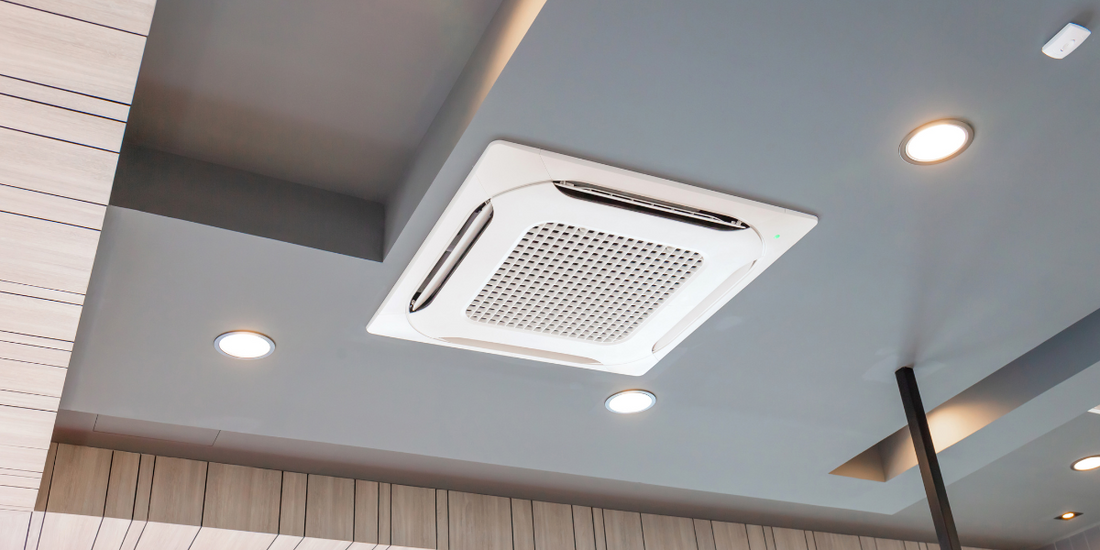
Whole Home Energy Recovery Ventilators: How They Work and Why They Matter
Share
Energy Recovery Ventilators (ERVs) are revolutionary systems designed to optimize indoor air quality while conserving energy. These devices have gained popularity for their ability to balance ventilation needs in buildings, ensuring a healthy indoor environment. Understanding the mechanics behind ERVs illuminates their significance in modern construction and sustainability efforts.
Top 10 Points on How Energy Recovery Ventilators Work:
Top 10 Points on How Energy Recovery Ventilators Work:
- Core Principle: At the heart of an ERV lies a heat exchanger core. This core facilitates the exchange of heat between incoming and outgoing air streams, without allowing them to mix. It's typically made of materials like aluminum or plastic with high thermal conductivity
- Dual-Stream Ventilation: ERVs operate by simultaneously drawing in fresh outdoor air and expelling stale indoor air. These streams pass through the heat exchanger, where heat transfer occurs. The outgoing air preconditions the incoming air, either warming or cooling it, depending on the season.
- Heat Transfer Mechanism: ERVs employ either a sensible heat or enthalpy recovery process. Sensible heat recovery involves transferring only heat energy, suitable for climates with extreme temperature differentials. Enthalpy recovery, on the other hand, transfers both heat and moisture, beneficial in humid conditions to maintain optimal indoor humidity levels.
- Reduced Energy Consumption: By recovering energy from the outgoing air, ERVs minimize the workload on heating and cooling systems. This results in significant energy savings, making them a key component of green building strategies and energy-efficient HVAC designs.
- Air Filtration: ERVs often include filters to capture particulate matter, allergens, and pollutants from incoming air. This enhances indoor air quality by reducing contaminants, promoting a healthier living or working environment. The recent pandemic reinforced the need for more air exchanges and added filtration.
- Customizable Control: Modern ERV systems come with advanced control options, allowing users to adjust ventilation rates based on occupancy levels, outdoor air quality, and specific indoor air quality requirements. This adaptability ensures efficient operation tailored to each building's needs.
- Noise Reduction: ERVs are engineered for quiet operation, employing sound-absorbing materials and vibration-dampening techniques. This ensures minimal disruption to occupants while maintaining consistent airflow and ventilation effectiveness.
- Integration with HVAC Systems: ERVs seamlessly integrate with existing heating, ventilation, and air conditioning (HVAC) systems. They can be installed as standalone units or incorporated into ductwork, providing a comprehensive solution for indoor climate control.
- Maintenance Requirements: Regular maintenance is essential to uphold ERV performance and longevity. This typically involves replacing filters, cleaning the heat exchanger core, and inspecting components for any signs of wear or malfunction. Scheduled maintenance ensures optimal efficiency and prolongs the lifespan of the system.
- Environmental Impact: Beyond energy savings, Whole Home ERVs contribute to environmental sustainability by reducing greenhouse gas emissions associated with heating and cooling operations. By promoting efficient ventilation and reducing reliance on fossil fuels, ERVs play a crucial role in mitigating climate change and advancing sustainable building practices. As awareness and the installation base increases, financial incentives can be available.
Parting Thoughts:
Energy Recovery Ventilators represent a paradigm shift in indoor air quality management, offering a holistic solution that prioritizes health, comfort, and energy efficiency. As society continues to prioritize sustainability and occupant well-being, the role of ERVs in modern building design becomes increasingly indispensable.
Understanding their operation and benefits underscores their significance in creating healthier, more sustainable built environments for generations to come.
